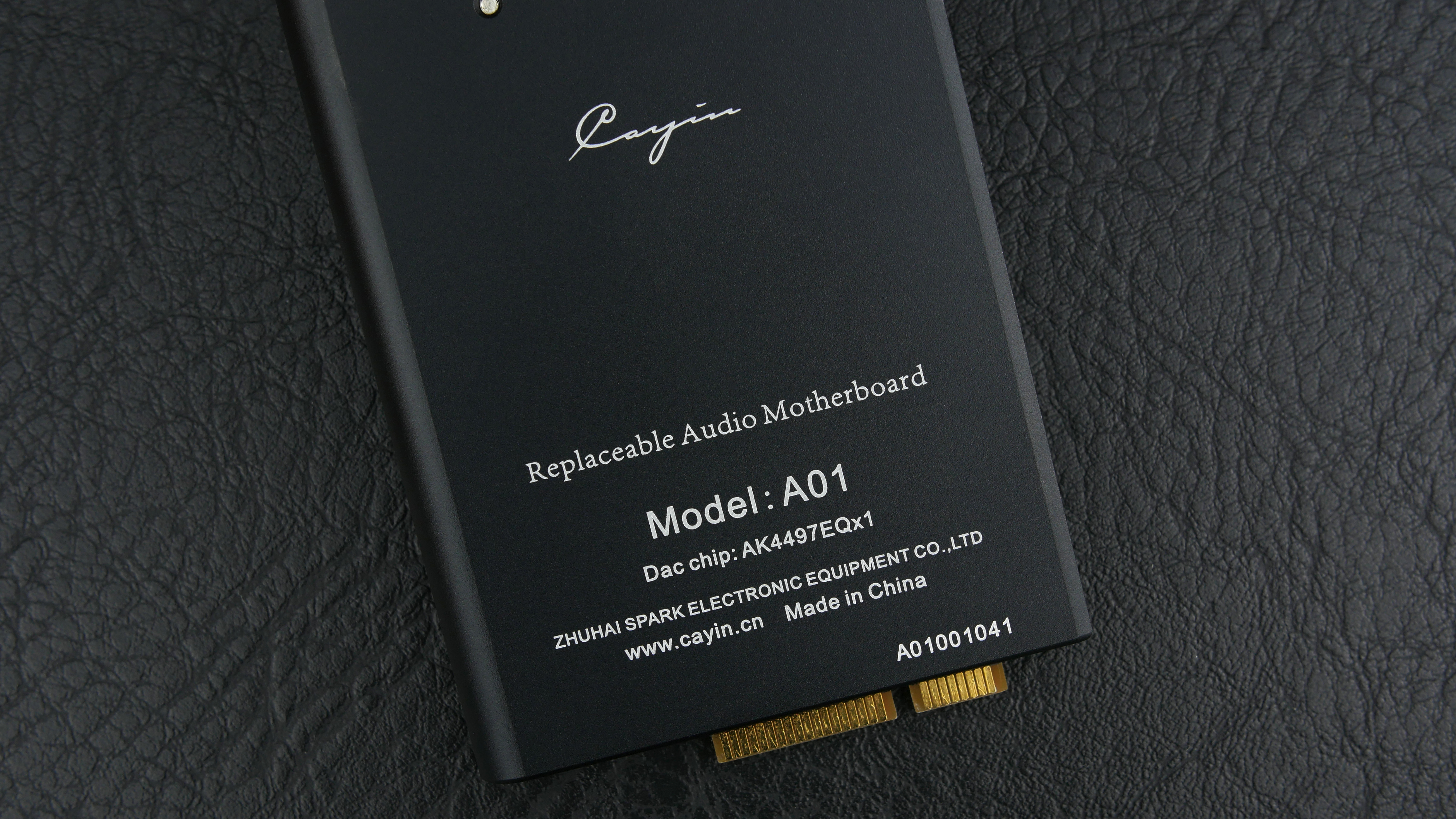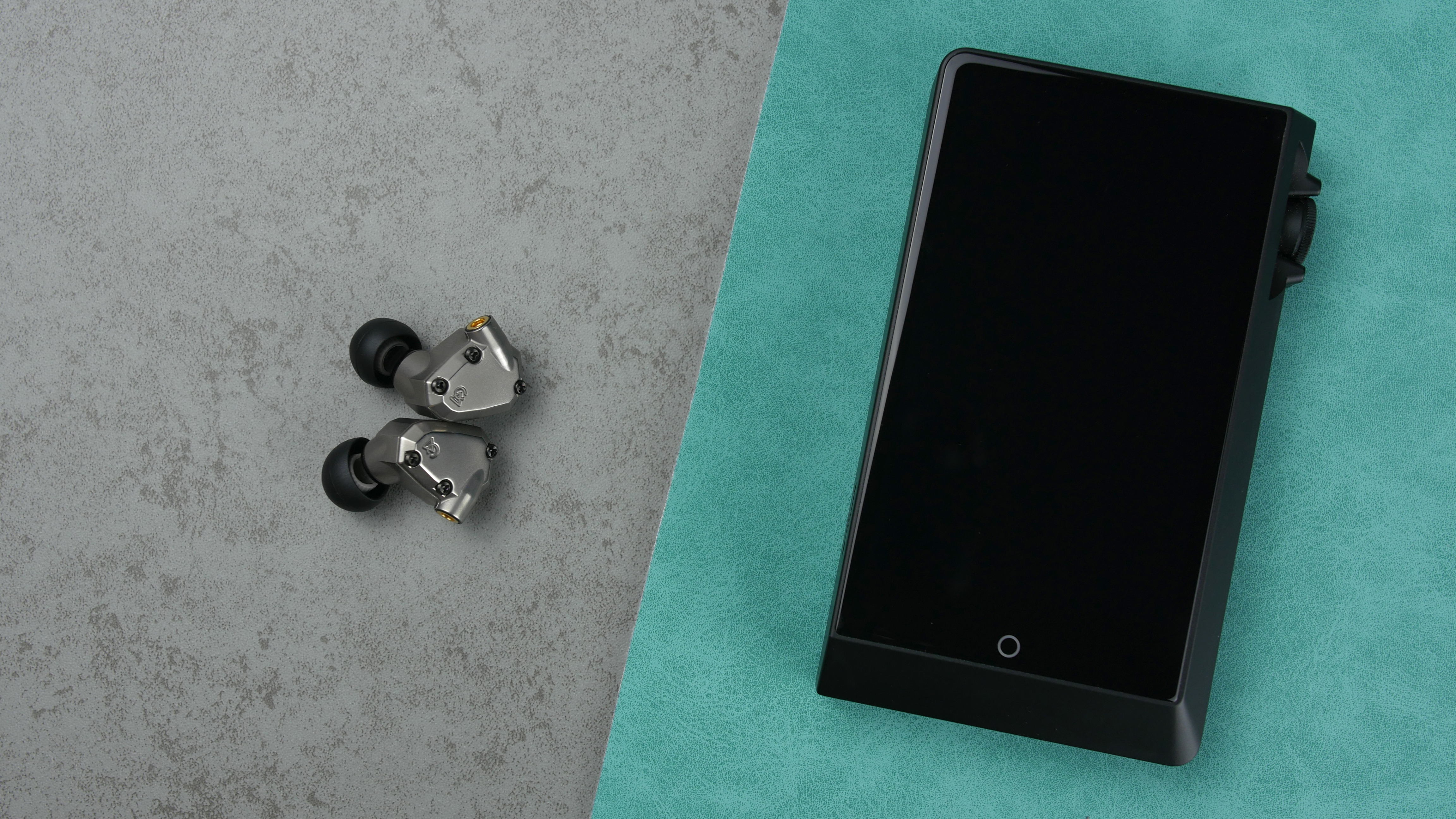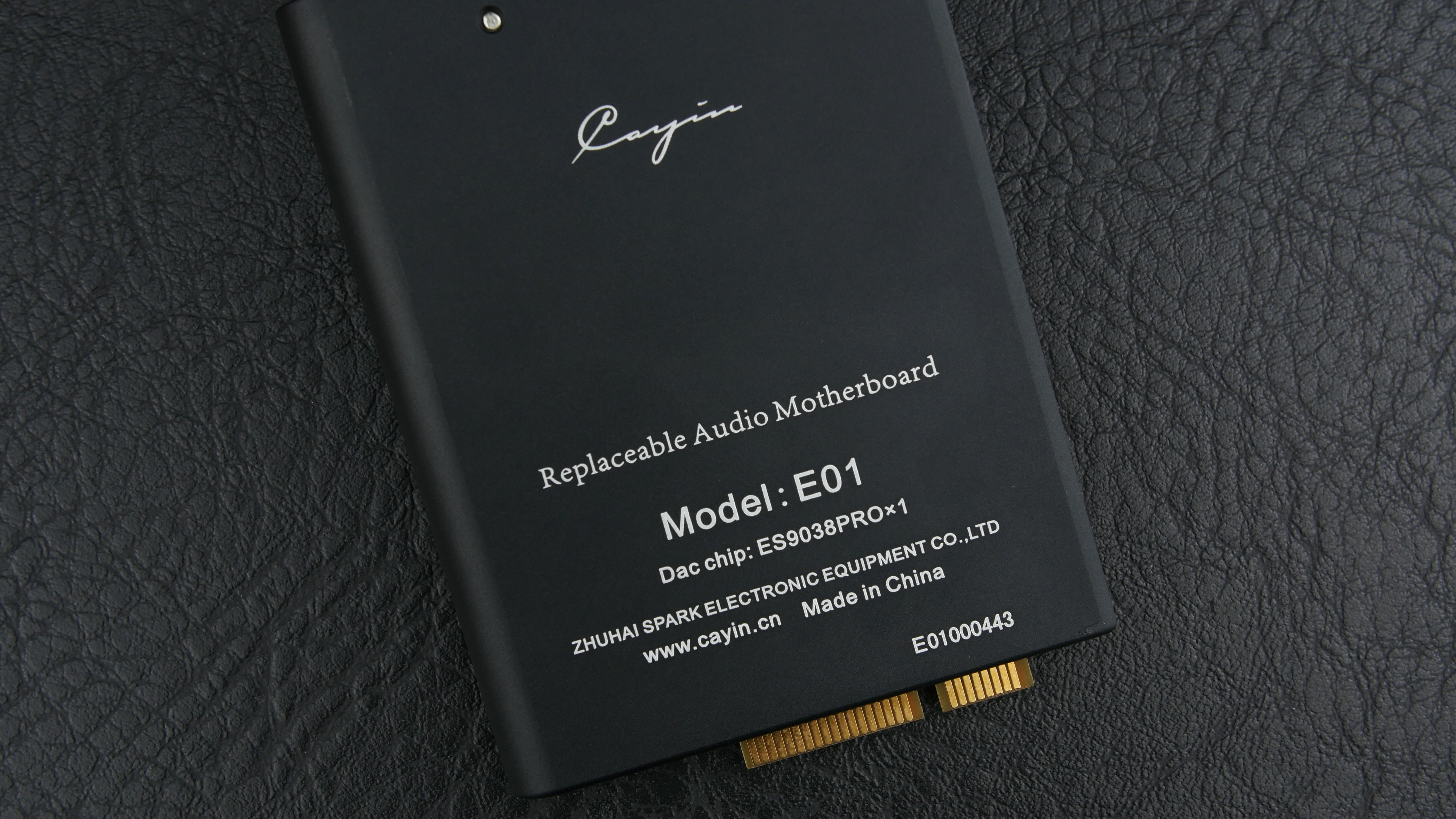Cayin N6ii is an Android based DAP with interchangeable motherboards priced at 1199$. Today we’re reviewing it with three different modules – A01, T01 and E01.
Sound quality for the price









Rating: 9 out of 10.
Build quality










Rating: 9.5 out of 10.
Value









Rating: 9 out of 10.
Packaging
 Stellar unboxing experience.
Stellar unboxing experience.
If you’ve ever had a Cayin product at your hands then you know, that these fellas really try to deliver a good unboxing experience.
The DAP comes in a rather big box with an outer, silver shell that’s heavily texturized. Underneath that, there’s a foldable box which contains quite a nice set of accessories: USB C data cable, black leather case and the 2.5mm to 4.4mm adapter. You’re not getting a ton of stuff, but every single thing is of very high quality, and the adapter could be a life-saver if you have some 2.5mm cables lying around.
Overall, I believe that this is how it’s supposed to be with more Hi-End gear. Don’t give us a lot of accessories that are cheap or not really functional. Rather than that, I’d prefer to get a quality case and some functional things like the adapter included. Well done Cayin.
 Quality > quantity when it comes to the accessories.
Build quality
Quality > quantity when it comes to the accessories.
Build quality
 Operating the N6ii is pretty much flawless.
Operating the N6ii is pretty much flawless.
The other thing that Cayin really focuses on is the build quality of their products. That’s also true with the N6ii, which is, quite literally built like a tank.
It’s a rather bulky player but the design and finish are outstanding. Just like with the N3Pro, it looks minimalistic, raw, and quite industrial. Matte-black finish is spot-on, and the asymmetric front panel is actually more convenient than I thought it will be (at least for right-handed folks).
As far as IO goes, starting from the bottom we’re greeted by a USB-C connector and I2S digital output. On the left side we can find a TF card slot, and on the right side, there are media control buttons, as well as the volume wheel. The wheel itself sits between 2 posts, which are protecting it from any physical damage that may accidentally occur. It is smooth and accurate, which makes it a joy to use.
On the front, we’ve got a 4’2 inch, 1280×768 IPS screen which is both bright and sharp, and it compliments an almost unlimited functionality of the Android system flawlessly.
The included leather case is black with red stitching and it’s a fantastic addition free of charge. The fit and finish are top-notch, which makes for a quality way to protect our new DAP.
Overall, the Cayin N6ii really feels like a hi-end device in the hand and its design really speaks to me. Just like the N3Pro, it offers a terrific build quality which is very well-thought and functional. Chapeau bas.
 Black leather case included in the box is brilliant.
Tech
Black leather case included in the box is brilliant.
Tech
 Great screen and Android system make for a good user experience.
Great screen and Android system make for a good user experience.
I won’t be mentioning all the single tech aspects of the N6ii, as no one will do it better than Cayin itself on their official website, so what’s the point.
What’s worth pointing out is that it runs Android ver. 8.1 out of the box which allows us to use all the streaming services, optional music players, etc. At the same time, it’s very smooth and snappy, which is very important. Who likes to use laggy players in the first place? It’s 2021, and I won’t be accepting anything else than smooth and snappy performance, especially in this price range.
The E01, E02, and A01 motherboards support PCM up to 32bit/384kHz and 8x MQA decoding, while the T01 supports PCM up to 24bit/192kHZ and 4x MQA decoding. Don’t make these numbers fool you though, as this difference is (in my opinion) absolutely marginal.
Let’s talk wireless – N6ii has Bluetooth 4.2 built-in, with the support of LDAC (transmitter and receiver) and aptX (transmitter only). Also, thanks to HibyLink you can use your smartphone to control the DAP.
Thanks to being a chunky boi, N6ii has a huge, 5900mAh battery built in with support of the Quick Charge 3.0, which will charge the battery from 10% to 90% in 110 minutes. I wish N3Pro had it as well, but hey, it is what it is (it’s probably the only con of N3Pro anyway). Since all the motherboards are a completely different story in terms of the audio signal, the battery life varies between all of them, capping at:
- A01. 14h playback via 3.5mm / 13h playback via 4.4mm
- E01. 7.5h playback in Class A / 9.5h playback in Class AB
- T01. 8.5h playback via 3.5mm / 7.5h playback via 4.4mm
- E02. 9.5h playback phone out / 22h playback Line Out
Motherboards
 We’re gonna look into three of four different motherboards.
We’re gonna look into three of four different motherboards.
Note : I’ll be describing all four motherboards currently available to buy, but I haven’t had the E02, which means no sound impressions of this specific one.
So, the big deal about the N6ii is that it’s the first DAP to utilize interchangeable audio motherboards. We’ve seen an interchangeable AMP modules in the past (check iBasso), but this time we’ve got different DAC chips as well. That basically means that we’re getting a completely different sounding DAP depending on the MOBO we choose.
 Even the motherboard’s unboxing experience is good.
Even the motherboard’s unboxing experience is good.
Changing the motherboard is a piece of cake – you just have to unscrew two screws on the top part and slide the mobo out of the DAP. Then, just take the new one, slide it in, and screw it down. Boom, you’re done.
Inside every motherboard’s package, you’ll find some spare screws (these are tiny, so you actually can lose them!) and a screwdriver. Again, nice to see some high-quality accessories from Cayin, as the screwdriver supplied is made of metal and it ain’t your basic, 1$ plastic thing. They really want you to feel special about using this product.
 Simple but quality.
A01
Simple but quality.
A01
 The A01 takes its turn.
The A01 takes its turn.
The A01 motherboard is using a single AK4497EQ chip with OPA1622 x4 in parallel amplification to deliver more power. It has a 3.5mm line-out, 3.5mm phone out and the 4.4mm balanced output for both line out and phone out. That gives you a lot of functionality and convenience.
The sound of the A01 module can be described as full-bodied, slightly laid-back, and somehow warm. It is definitely not a neutral sounding device, nor it has a very in-your-face presentation, especially in the treble region.
The
bass is thick, elevated, and full sounding, and that can be heard from the first try. It’s not the most accurate bass in the world though, but instead, it focuses mainly on mid-bass, creating that thick and powerful sound. While it may lack a little bit of detail, it provides a huge amount of fun and rumble.
The
mids are natural and also full-bodied, but it’s definitely a more delicate and calm part of the sound than the bass. It shines with male vocals, due to having a slight bump in the lower-mid section. Thanks to that, vocalists sound forward, romantic, and quite natural. Mariusz Duda from Lunatic Soul has this lovely timbre in his vocal and it’s recreated brilliantly on the A01 module.
The
treble is laid-back and smooth, without even a hint of sharpness or edginess. It goes great with some classic rock recordings or worse mastered music, but it lacks a bit of crispiness and that edge in acoustic and classical tracks. If you pair it with a treble-forward IEM though, such as CFA Ara, the result is quite spectacular as you’ll get a ton of information in a more forgiving fashion.
The
soundstage is good but don’t expect acres of space around your head. It’s not as wide as the other two modules, and also falls short a tiny bit in terms of imaging and overall separation. It’s not a big deal though, as the A01 is (IMO) meant for the music that is not that much about staging in the first place.
Overall, I’d recommend using a neutral or even a little sharp sounding IEMs with the A01, as it’s gonna tame them a little bit, while providing some body and impact in the lower frequencies. I’m not gonna lie – that’s totally my cup of tea while listening to progressive rock, and A01 + Ara has had quite a lot of listening time during the tests. I definitely recommend this combination.
 And it sings wonderfully, with rich and thick tone and natural voicing.
T01
And it sings wonderfully, with rich and thick tone and natural voicing.
T01
 Time for the T01.
Time for the T01.
The T01 motherboard uses dual PCM1792 chip as well as the same OPA1622 x4 found in the A01. That means that the difference in sound is all about different DAC chips, and as expected – it’s not that big actually. The T01 is also the weakest on paper, supporting only 24/192, and it decodes MQA x4, in comparison to 32/384 and MQA x8 in the other motherboards.
As I stated above, the difference between the A01 and T01 is not huge, but it’s definitely noticeable. A01 is fuller, more natural, and laid-back, while the T01 is leaner and brighter sounding, especially in the vocals area and in the treble.
The
bass is quite similar to the one found in A01, but it’s slightly less emphasized and has less body. Nonetheless, it’s still a fun and thick sounding bass which will give you that great sense of rhythm and head-bobbing ability. If you’re looking for a bass-heavy DAP though, I suggest getting the A01.
The
Midrange is a similar story to the lower frequencies. It is less laid-back, leaner, and more neutral sounding, but I find it simply less engaging and rich than the A01 in most cases. Where it’s the opposite, is at female vocalists. Take Fleetwood Mac for example – Stevie Nicks vocal really shines when it gets just a little bit more edge supplied by the T01, providing a more forward and inspiring timbre.
Treble is where these two really start to sound quite different. The T01 is brighter, more pronounced, and detailed than the A01, which is more smooth and delicate. If you’re a metal-head or you’re into stuff like The Weeknd or Post Malone, then you’ll definitely gonna enjoy that edge in the treble more than A01’s laid-back presentation.
The
soundstage is slightly more open and spacious than the A01, but it’s not a big difference. The imaging and separation are a touch better, providing a better experience with more spacious music genres, such as symphonics or Pink Floyd stuff.
I recommend pairing the T01 module with similar IEMs as in the A01 paragraph, but the Ara by CFA started to sound a bit too forward and aggressive for my personal taste. It does wonders with the Dorado 2020 and Lime Ears Aether R though, as they definitely don’t need to be tamed.
 It’s more neutral than the A01, with more treble emphasis.
E01
It’s more neutral than the A01, with more treble emphasis.
E01
 And the icing on the cake – the E01.
And the icing on the cake – the E01.
The E01 motherboard uses a ES9038PRO DAC chip as well as Class A/AB amplification. Unfortunately, it’s more expensive than A01 and T01, and also eats the battery the fastest at 7.5h with the Class A power mode.
Now we’re getting into a more interesting comparison, as I think the E01 is superior to both A01 and T01 modules in terms of raw audio performance. Tonality-wise it sits between the other two but does just about anything slightly better.
The
bass is quite similar to this of A01 when using a Class A mode. It’s thick, powerful, and engaging, but has a better definition and is more accurate. The AB mode tilts towards the T01, but yet again with better detail and texture. Both provide great low frequencies though, with a fantastic sense of rhythm and that punch to die for. It pairs especially well with Vision Ears Elysium, which lacks that low-end punch and richness, because of using a single armature driver for the bass response.
The
Midrange is where things are obvious – It’s as engaging and lovely as with the A01, but it also has better separation and the timbre is even more natural. Mid frequencies sound really Class A-ish, providing both warmth and striking technical performance. Doesn’t matter if you’re into male or female vocal, both sound great on E01 in both A/AB class.
Treble is more pronounced than the A01, and slightly less than the T01. Thanks to that, it sits just perfectly in-between, and that’s the best thing possible, as it’s truly a marriage of the best of both worlds. Also, the detail, airiness, and resolution beat the other two by quite a margin actually. It just sounds like it’s supposed to, neutral yet natural, detailed yet forgiving. That makes it a great company for a lot of IEMs on the market.
The
soundstage is yet another thing that sits above both A01 and T01. It’s more spacious with better imaging and separation. What’s important though, is that it can also sound intimate in music that’s mastered that way, providing a great staging performance with just about every genre you’d like to listen to.
Taking all that under consideration – I definitely recommend getting the E01 if you’re after the best SQ possible, as it’s just technically superior to both A01 and T01 while still maintaining that Caying house sound – musical, smooth and engaging.
Consider the A01 if you’re into laid-back and intimate playback, or you love Campfire Audio Ara and would like to tame them just a little bit in the treble and upper midrange frequencies.
The T01 is my least favorite out of the three, and I’d consider it only if I wouldn’t want to spend more on the E01, while needing a more neutral and brighter presentation than the one found on A01.
 Best of both worlds and the leader in terms of sound quality.
Summary
Best of both worlds and the leader in terms of sound quality.
Summary
 With their current line-up of the N3Pro, N6ii and N8 Cayin set’s the bar very high for its competitors.
Cayin N6ii is a revolutionary DAP thanks to its interchangeable motherboards. The player itself is gorgeous with the exceptional build quality, providing a flawless experience thanks to a smooth Android operating system with good hardware. At last, it sounds fantastic on every single motherboard but offers different sound signatures for you to choose from when buying, or on the go if you would decide to buy two or three different ones.
With their current line-up of the N3Pro, N6ii and N8 Cayin set’s the bar very high for its competitors.
Cayin N6ii is a revolutionary DAP thanks to its interchangeable motherboards. The player itself is gorgeous with the exceptional build quality, providing a flawless experience thanks to a smooth Android operating system with good hardware. At last, it sounds fantastic on every single motherboard but offers different sound signatures for you to choose from when buying, or on the go if you would decide to buy two or three different ones.
Just like with the N3Pro, I really adore trying unconventional and fresh things with their DAPs that Cayin does. They really earn their spot as one of the best on the market, and I can’t wait for the next interesting product these guys will come up with.
Highly recommended.
Gear used during this review for the sake of comparison and as an accompanying equipment:
- Headphones – Campfire Audio Dorado 2020, Vega 2020, Andromeda, Lime Ears Aether R, Vision Ears EVE20, Elysium, Meze Rai Penta
- Sources– Cayin N3Pro, Cayin N5ii, Fiio M15, Cayin N8, JDSLabs Atom stack, SMSL SU-9, Cayin N8.










































